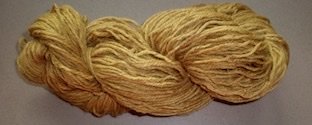 This fruit, whose Latin roots mean “seeded apple,” was thought to be the original forbidden fruit in the Garden of Eden. The small tree was first domesticated in the Fertile Crescent area of Turkey around the confluence of the Tigress and Euphrates Rivers and it does grow wild there, though much smaller than in irrigated gardens. It is still used for dyeing the wool and silk for knotted pile carpets in the rug workshops of that region that use natural dyes. Locally, you can see pomegranate trees planted around the Santa Cruz City Hall as part of the landscaping!
This fruit, whose Latin roots mean “seeded apple,” was thought to be the original forbidden fruit in the Garden of Eden. The small tree was first domesticated in the Fertile Crescent area of Turkey around the confluence of the Tigress and Euphrates Rivers and it does grow wild there, though much smaller than in irrigated gardens. It is still used for dyeing the wool and silk for knotted pile carpets in the rug workshops of that region that use natural dyes. Locally, you can see pomegranate trees planted around the Santa Cruz City Hall as part of the landscaping!
This lusciously-colored winter fruit makes you think that the dye will also be a wonderful magenta like the peel and juicy seeds inside. However, no matter how concentrated the dye pot you create, the lasting color will be a shade of gold. Yes, that pomegranate juice may leave a pink stain on your white cotton blouse, but that is a fugitive color that will soon be only a grayish mark, a true stain, not a dye. This has been a dye source used for thousands of years because the tannins in the peel can be used as both a mordant and a dye, though I usually mordant with alum at 15% WOF before dyeing protein fibers anyway. Cellulose fibers do not need an additional tannin mordanting before dyeing, though the color will be lighter than on the animal fibers.

When pomegranates come into season starting around December, they may be purchased and stored at room temperature for 2-3 months or refrigerated for longer in a plastic bag. I buy several, save the peels after breaking them into small pieces before drying at room temperature and storing for later use or freezing. They may also be used fresh. Simmer the peels from three fruits for about 45 minutes in two quarts of water, then strain before entering four ounces scoured and wet wool or other protein fiber, and simmer (170-180℉) for sixty minutes. Remove pot from the heat and allow fiber to cool off in the dye overnight. Squeeze out the fiber, hang to air dry in the shade, and wait at least a week before rinsing. If you dry the fiber indoors, remember that the drips can stain!